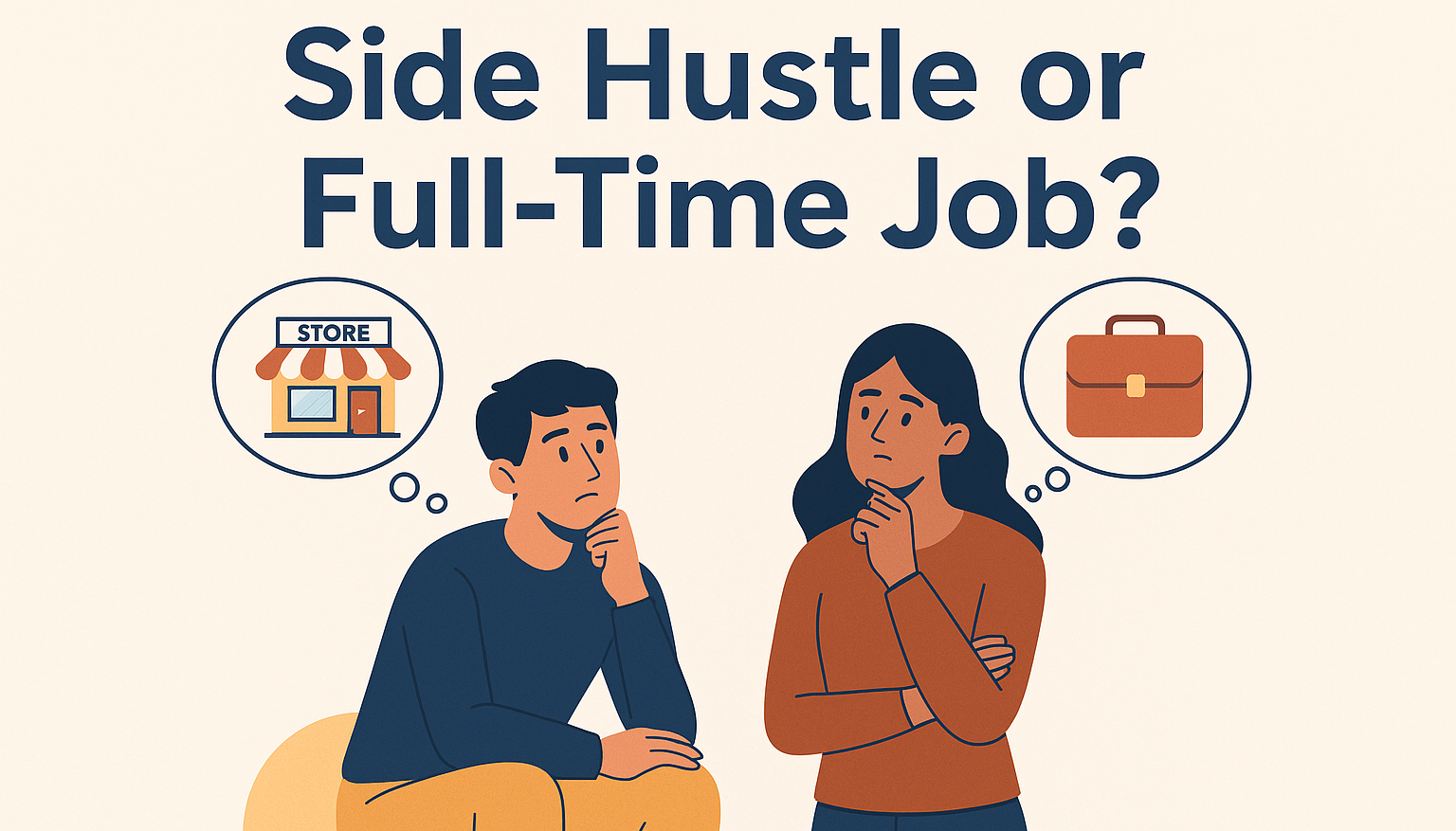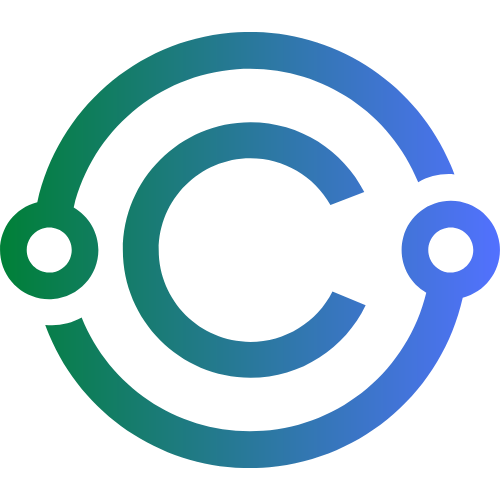Side Hustle or Full-Time Job? How to Decide What’s Right for You

Should you keep your secure 9-to-5 or take the leap into freelancing, consulting, or running your own business full-time? It’s one of the most common dilemmas professionals face today—especially in a world where side hustles are increasingly normalized and even glamorized.
The answer isn’t as simple as "follow your passion" or "play it safe." It's about understanding your goals, appetite for risk, lifestyle needs, and personal definition of success. In this blog, we break down the pros and cons of side hustles versus full-time jobs, key decision factors, and real-world advice to help you make a confident, informed choice.
1. Understand the Difference
Full-Time Job:
- Steady income and benefits (health insurance, paid time off)
- Fixed work hours
- Stability and a defined career path
Side Hustle:
- Income from work done outside your primary job
- Flexible schedule
- Often passion-driven
- Can evolve into a full-time business
You may love the freedom of a side hustle or crave the predictability of a full-time role. Your ideal setup might even be a hybrid of both—for now.
2. Evaluate Your Goals and Lifestyle
Start by asking:
- Do I want flexibility or structure?
- Is my goal to build wealth or pursue passion?
- Am I okay with irregular income?
- What are my family, financial, and lifestyle obligations?
Use a simple goal-setting matrix like SMART goals to evaluate your career plan.
3. Weigh the Pros and Cons
Full-Time Job Pros:
- Stable paycheck
- Benefits (insurance, retirement plans)
- Easier to plan financially
- Clear career progression in some industries
Full-Time Job Cons:
- Less control over time and tasks
- Office politics and limited creativity
- Job security isn’t always guaranteed
Side Hustle Pros:
- Creative freedom and flexibility
- Multiple income streams
- Opportunities to turn passions into profit
Side Hustle Cons:
- No benefits
- Irregular income
- Time-consuming alongside a full-time job
- Loneliness or lack of support structure
4. Assess Financial Readiness
Before quitting a full-time job, answer:
- Do I have 6-12 months of emergency savings?
- Have I replaced at least 70-80% of my salary through my side hustle?
- Am I tracking my monthly cash flow and expenses?
Use tools like:
- YNAB (You Need a Budget)
- Mint
- Wave for side hustle invoicing and bookkeeping
5. Consider Energy and Time
Ask yourself:
- Can I handle the mental load of doing both?
- Is my full-time job supportive or flexible?
- Am I consistently motivated to work on the side?
Burnout is real. If your side hustle drains your evenings and weekends without bringing joy or results, it may not be sustainable.
6. Explore Hybrid Paths
If you’re unsure, don’t jump to extremes. Try these middle-ground strategies:
- Negotiate a part-time or freelance arrangement with your employer
- Transition to a 4-day workweek if possible
- Scale your side hustle slowly while staying employed
Case Study: Malik’s Transition Story
Malik was a software engineer in Canada who had a passion for creating mobile apps. While working full-time, he developed a budgeting app on weekends and promoted it on Reddit. Over 18 months, his side project gained 20,000 users and started earning $3,000/month.
Before quitting, he ensured he had 9 months of savings and ran the app profitably for 6 months. Today, Malik is a full-time indie app developer with multiple revenue streams from ads and premium features.
Key Takeaway: Malik didn’t quit on a whim. He made data-driven decisions and planned every step.
7. Clarify Your Definition of Success
Success isn’t always about money. For some, it’s autonomy. For others, stability or social impact.
Define what a "successful" work life looks like to you:
- Flexible hours?
- Creative control?
- Time with family?
- Recognition or legacy?
8. Talk to People Who’ve Done Both
Reach out to:
- People who turned side hustles into businesses
- Freelancers and solopreneurs
- Colleagues who balance both worlds
Ask questions like:
- What challenges surprised you?
- What do you wish you had done differently?
- How do you manage stress or slow months?
Try Lunchclub or Meetup to network with others on similar paths.
9. Test and Iterate
Use the Build-Measure-Learn loop:
- Build a small MVP (Minimum Viable Product) of your idea
- Measure response (sales, feedback, demand)
- Learn and improve or pivot
Whether you’re selling on Etsy, freelancing on Fiverr, or offering coaching, treat your side hustle like a business even while it’s small.
10. Don’t Let Fear Make the Decision for You
Fear of failure, judgment, or instability can paralyze you. But so can staying in a situation that drains your energy.
Ask: What’s the worst-case scenario—and can I live with it? Then ask: What’s the best-case outcome—and is it worth trying?
Often, the leap isn’t as risky as you think when you plan properly.
There’s no one-size-fits-all answer to the side hustle vs. full-time job debate. The best path is the one that matches your personal values, energy levels, goals, and timing.
Start by reflecting, researching, and experimenting. You don’t have to figure it out in a week. Progress over perfection—that’s how confident, sustainable career moves are made.
More from UJ+:
- How to Choose the Right Career Path When You’re Unsure
- 10 Career Mistakes to Avoid in Your 20s and 30s
- Creating a 90-Day Plan for Your Side Hustle
Subscribe to UJ+ for more real-world advice, smart tools, and inspiring stories to help you build a career that actually fits your life.

